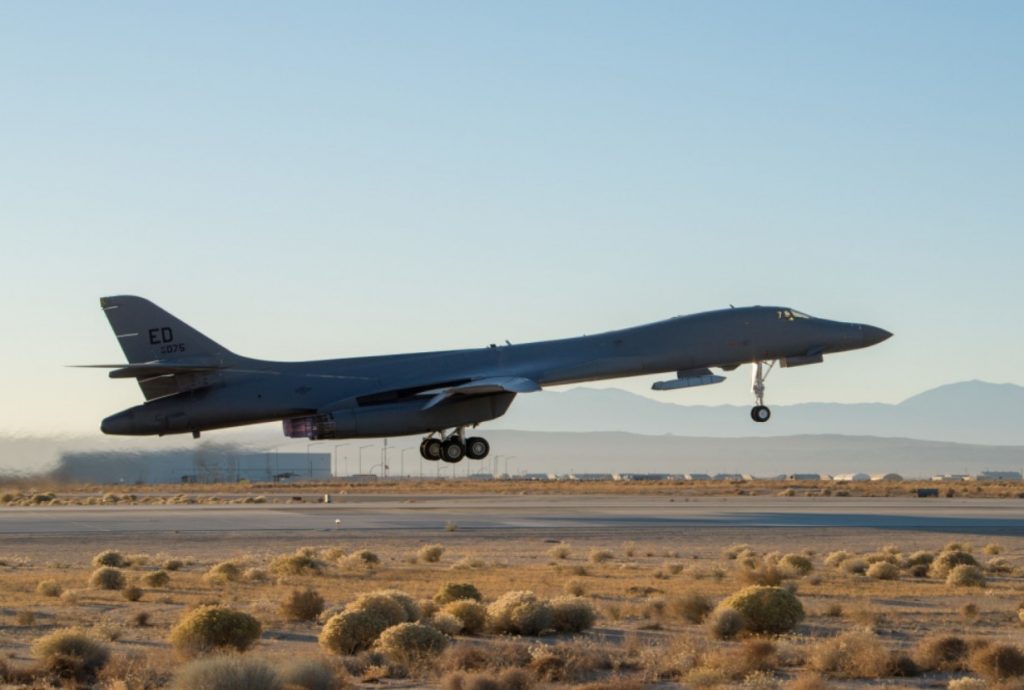A US Air Force B-1B Lancer bomber launched a cruise missile from an experimental pylon under its fuselage as the service continues work on refitting the bomber aircraft with external hard points.
The December 4 demonstration saw a Lancer assigned to the 412th Test Wing’s 419th FLTS launch an inert Joint Air-to-Surface Standoff Missile at Holloman Air Force Base. The missile was released from a pylon that usually carries the “Sniper” targeting pod.
“The Air Force Test Center is enthusiastically teaming with the Air Force Global Strike Command to enable greater flexibility in bomber payloads,” said Maj. Gen. Christopher Azzano, Air Force Test Center commander. “Demonstration of B-1B external carriage reflects the potential to keep weapon systems in the fight with increased combat capability.”
This release demonstration also put Air Force Global Strike Command one step closer to building the future bomber fleet for the Department of Defense and US Air Force while utilizing current resources. Gen. Tim Ray, Air Force Global Strike Command commander previously said that adapting a small number of B-1s to carry hypersonic weapons could be vital to bridge between the bomber force of today, to the force of tomorrow.
The successful demonstration highlights a possible weapons configuration that may be implemented on the B-1B. External pylons were originally designed for use on the B-1s but were later scrapped to comply with the Strategic Arms Reduction Treaty (START). However, the return to use of external hard points would not violate the New START agreement.
The December 4 flight culminates the B-1B expanded carriage demonstration that began with a modified internal bomb bay demo in 2019. “Box drop” ground tests were conducted in October 2020 to verify the mechanical modifications to the pylon. A captive carry flight then took place in November which helped set up the external release mission.

“A targeting pod pylon was modified mechanically to allow for different connector configurations, and the internal wiring was replaced with harnesses that would support its new role,” explained N. Keith Maynard, 812th Airborne Instrumentation Test Squadron.
Maynard serves as the Special Instrumentation (SI) Flight Chief, leading a group of more than 60 engineers, technicians, project managers and logisticians.
“Although the modification required to reassign one of the internal weapon stations to the external location was well within our capability, it wasn’t part of our normal charter of data acquisition,” Maynard said. “Regardless, we jumped on the opportunity to help our customer and immediately assisted with the planning and provisioning and, when approved to do so, executed the modifications to the pylon and aircraft.”



























